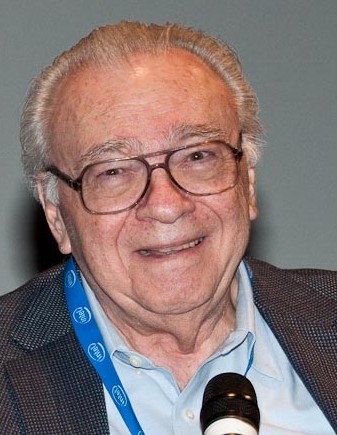-
(b.) -1925 June 02(d.)2011 September 17
Bio/Description
A semiconductor pioneer and a member of the so-called Traitorous Eight associated with Nobel-winning physicist William Shockley, he was born and raised in Manhattan's Lower East Side, the youngest of three children of Jewish immigrants Charles and Gussie Blank. His father made musical-instrument cases and luggage, and also worked as a Russian translator. He attended Erasmus Hall High School and also served in the Army in World War II. He earned a Bachelor's degree in mechanical engineering from the City College of New York. He began his engineering career in 1952, when he joined AT&T's Western Electric plant in New Jersey. As a member of the engineering group at the plant, he helped create phone technology that allowed users to dial long-distance numbers without going through an operator. It was also at Western Electric where he met fellow engineer Eugene Kleiner. In 1956, he and Kleiner left AT&T to work at the lab of Nobel Prize-winning physicist William B. Shockley. He worked at the seminal Shockley Semiconductor Laboratory division of Beckman Instruments, until he and the other disgruntled members of what the controversial Dr. Shockley labeled the ?Traitorous Eight? left to form the influential Fairchild Semiconductor Corporation. There, he was part of the team that established a "model for entrepreneurs for the rest of [the 20th] century": stock options, no job titles and open working relationships. At Fairchild, he set up the "initial machine shop, assembly and the subsequent manufacturing facility in Hong Kong as incoming orders exploded." At their new labs, he and his peers developed an inexpensive method for manufacturing silicon chips, earning them $1.5 million in capital from a single investor. As the only two with any manufacturing experience, he and Kleiner were charged with bringing the dream to fruition - a task that required them to build the chips from scratch, beginning with the machinery for growing silicon crystals. They succeeded, of course, and in 1969, he left Fairchild to become a consultant. In 1978, he co-founded Xicor, where he was a member of its Board of Directors. In 2004, Xicor was acquired by Intersil Corp. for approximately US$529 million. In May, 2011, the California Historical Society in San Francisco gave him the ?Legends of California Award? along with the others of the ?Eight?. Looking back in advance of the award ceremony, he is quoted as saying, ??difficulties had accelerated when Shockley won the Nobel Prize: 'He would travel a lot and every time he came back, he would change direction. In light of these changing whims, their projects never were completed and many at Shockley grew frustrated." He spoke of those years as, ?having a kind of electricity in the air, [where] everything was happening fast and all at once.? In 2011, he lived in a retirement center across the street from the old Fairchild headquarters at 844 Charleston Rd. in Palo Alto, where he used to have his office and now a California Historical Landmark.
-
Date of Birth:
1925 June 02 -
Date of Death:
2011 September 17 -
Gender:
Male -
Noted For:
Co-developer of an inexpensive method for manufacturing silicon chips; building the chips from scratch, beginning with the machinery for growing silicon crystals -
Category of Achievement:
-
More Info:


